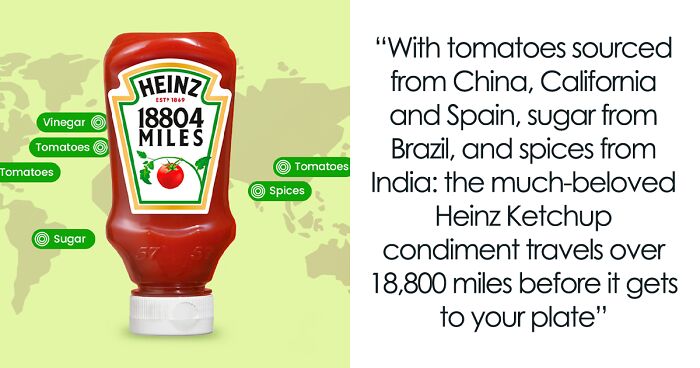
7 Popular Products And The Miles They Travel To Reach Your Plate
When you tuck into a Snickers bar, a plate of chips with ketchup, or a nice piece of Nutella on toast, do you ever wonder how these products get to you? How many ingredients go into making them, and where all of these come from? The chances are that you haven’t, but your favourite foods and drinks have a whole series of different supply chains behind them, traversing the entire globe.
With that in mind, whether it’s the tomatoes that go into your ketchup, or the cheese in your Big Mac, each component has travelled hundreds, maybe thousands of miles to get to your plate, whether by air, sea or road. We did some research to find out what goes into making some of our favourite foods (and drinks), and the results may surprise you…
More info: noblue.co.uk
Food miles are the distances that your food travels from where it is grown to where it is consumed
The term was coined by Professor Tim Lang, of City University London, and has now become widely used, but has also attracted criticism for not giving the full picture of food production’s impact on the environment.
Business software solutions provider, NoBlue, did some research to find out what goes into making some of our favourite foods and drinks, the miles each ingredient travels (to London), and the results may surprise you!
Nutella – 28,731 miles per jar
Everyone’s favourite chocolatey hazelnut concoction is one of the more “international” foods on our list. With the hazelnuts travelling over 2,260 miles from Turkey, the palm oil from Malaysia (6,485 miles) and the sugar and soya coming from Brazil (5,447 miles), it all adds up.
Snickers – 50,791.5 miles per bar
Easily the most well-travelled product on our list, Snickers bars contain ingredients from all over the world. Some of these include: coconut oil from the Philippines (6,795 miles), peanuts from Argentina (7,291 miles) and vanilla extract from Mexico (5,454 miles). However, it may surprise you to learn that Snickers bars contain some more local ingredients, with skimmed milk powder and egg white powder coming from the UK.
Coca-Cola Classic – 17,195.5 miles per can
The full ingredients of Coke are naturally a closely-guarded secret, but from what we could find, this fizzy beverage contains sugar and caramel from Brazil (5,496 miles) and coca leaves from Peru (6,075 miles). However, Coke also contains water and phosphoric acid, both of which are local to the UK, which brings its total down.
Skittles – 29,558 miles per 55g pack
With many components coming from Brazil (sugar, glucose syrup and carnauba wax – 5,496 miles), and others coming from South East Asia (palm fat – 7,424 miles), tasting the rainbow is the last step in a very long journey for the average pack of Skittles.
Big Mac – 8,050 miles per burger
For such a global icon, the average Big Mac in the UK is surprisingly local, at least compared to some of the other foods on our list. This is thanks to McDonalds’ commitment to using local producers for their food items. As such, the buns come from Oxford (77.5 miles), the beef patties from Scunthorpe or Waterford, Ireland (270 miles on average), the lettuce from Chichester or Spain (557.4 miles on average – it’s seasonal), the cheese from Northern Ireland (509.2 miles) and the Big Mac sauce from Lancashire (222.6 miles). Only the onions and pickles come from further afield: the onion from the US (4,484 miles) and the pickles from Turkey (1,930 miles).
Starbucks coffee – 5,427 miles on average per cup
While there are no additional ingredients in your standard cup of black coffee, Starbucks sources their coffee blends from all over the world. As such, in this case, we’ve taken the average distance from the various sources. As expected, these are some of the world’s biggest coffee producers, including: Colombia (5,290 miles), Ethiopia (5,503 miles) and Sumatra (6,738 miles).
Heinz Ketchup – 18,804 miles per bottle
With tomatoes sourced from China, California and Spain (average 3,864 miles), sugar from Brazil (again! 5,496 miles) and spices from India (4,648 miles), the much-beloved condiment travels over 18,800 miles before it gets to your plate.
______________
With the research and production, the project took around 30 hours to complete. The main limitation is that manufacturers can be quite secretive about where they source ingredients.
I can’t say I was surprised by the results, to be honest. Much of the convenience food and drink we consume is driven by how much it costs to produce and local production costs can be much higher – whether that’s down to labour costs or to recreate the ideal growing conditions. The fact that it’s cheaper to produce and ship tomatoes from China for ketchup, does blow my mind but doesn’t surprise me.
Looking at these illustrations, I can say that our diets are much more global than they were say 100 years ago. But often we take for granted how we’re able to eat out-of-season foods all year round, or how we’re able to consume food and drink that just couldn’t be produced locally (coffee for example) because it’s become so “normal”. There’s a global need to be more environmentally conscious, and while it would be difficult to completely avoid imported products these days, knowledge is power and it’s what allows us to put pressure on manufacturers to be more transparent and make better choices.
22Kviews
Share on FacebookThe cocoa in Cadbury leaves the trees here in Trinidad goes to England and then returns as chocolate bars.
Highly processed and/or overpriced junk food, extra carbon footprint flavour 😔
I agree, headless roach, but how are you supposed to eat if you're headless?
Load More Replies...This is not the right way to calculate food miles. It makes no sense to sum the miles travelled by different ingredients, it should be averaged by weight. Imagine you're at home cooking a curry out of vegetables from your own garden - does it make sense that the curry has 50,000 food miles because you used a pinch of 5 different spices from the other side of the world?
I think you might be overthinking the piece. It's about convenience foods not food you're making at home. It was purely to highlight the miles travelled by the ingredients in these products that are "made in the UK", which isn't strictly true. If anything, it's more about consciousness and just how much the UK imports to create the food and drink we consume.
Load More Replies...The cocoa in Cadbury leaves the trees here in Trinidad goes to England and then returns as chocolate bars.
Highly processed and/or overpriced junk food, extra carbon footprint flavour 😔
I agree, headless roach, but how are you supposed to eat if you're headless?
Load More Replies...This is not the right way to calculate food miles. It makes no sense to sum the miles travelled by different ingredients, it should be averaged by weight. Imagine you're at home cooking a curry out of vegetables from your own garden - does it make sense that the curry has 50,000 food miles because you used a pinch of 5 different spices from the other side of the world?
I think you might be overthinking the piece. It's about convenience foods not food you're making at home. It was purely to highlight the miles travelled by the ingredients in these products that are "made in the UK", which isn't strictly true. If anything, it's more about consciousness and just how much the UK imports to create the food and drink we consume.
Load More Replies...
 Dark Mode
Dark Mode 

 No fees, cancel anytime
No fees, cancel anytime 






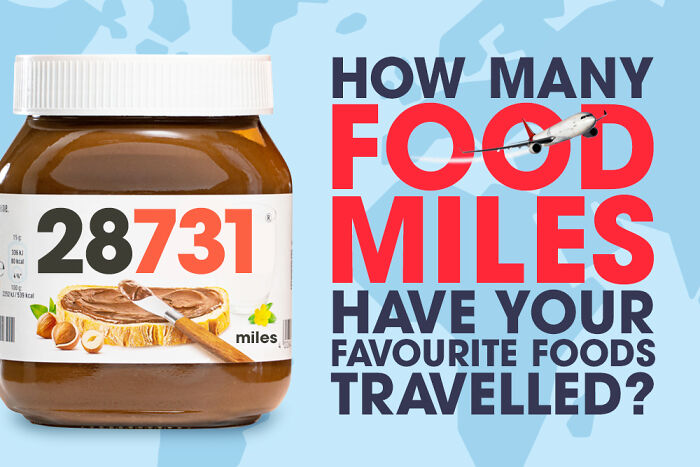
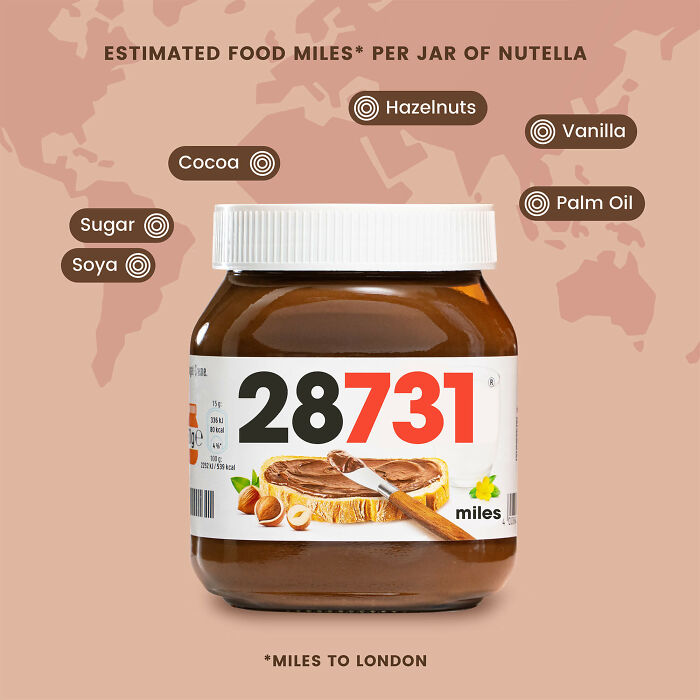
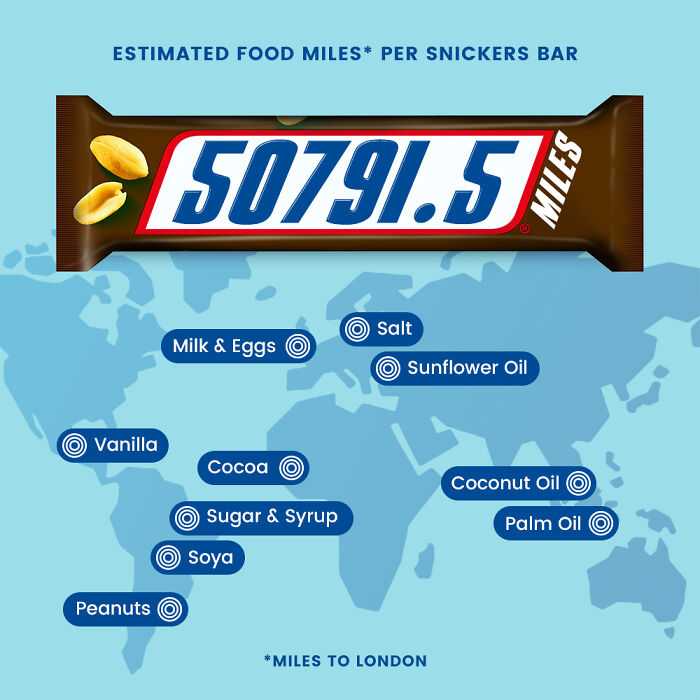
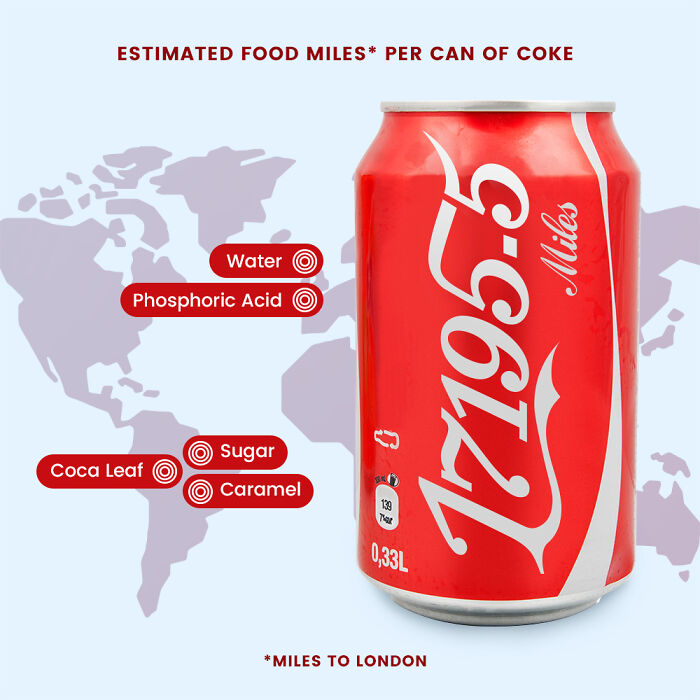
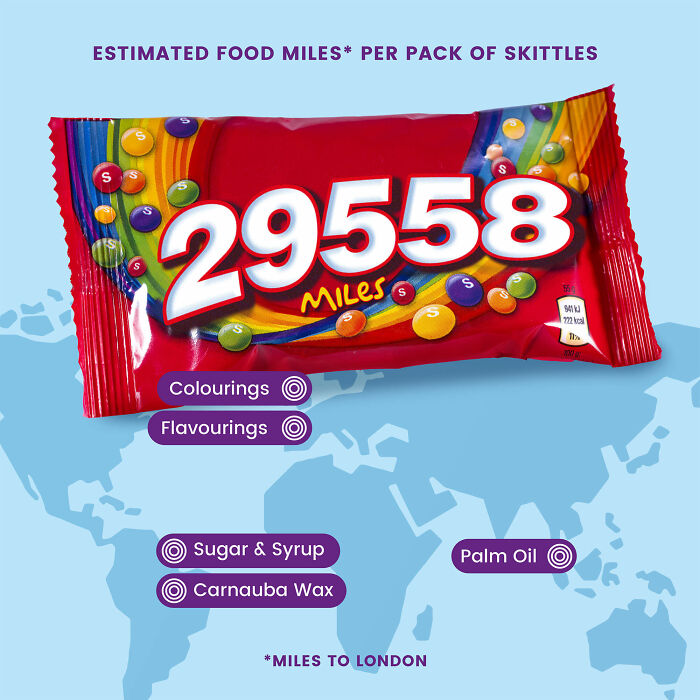
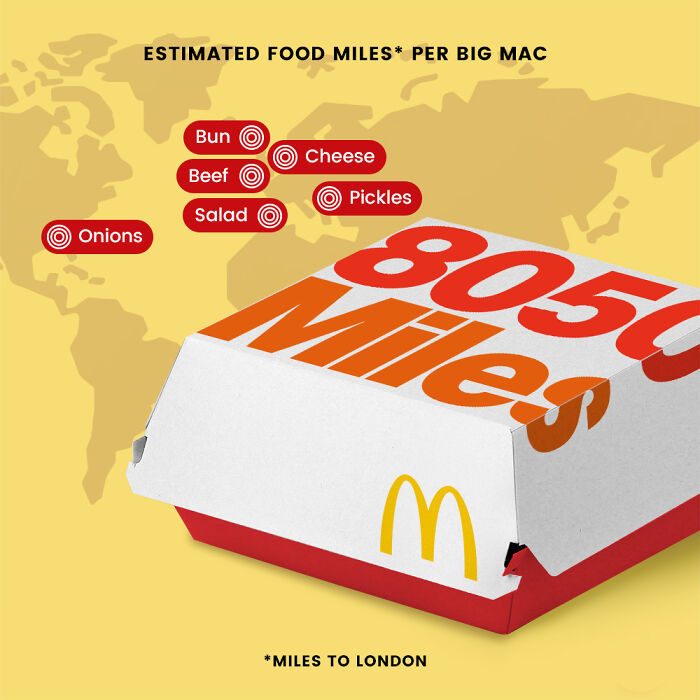
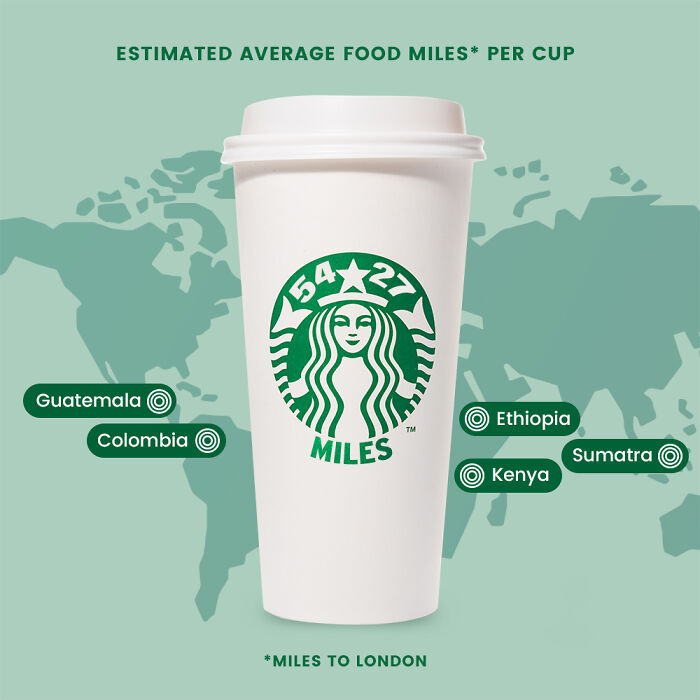
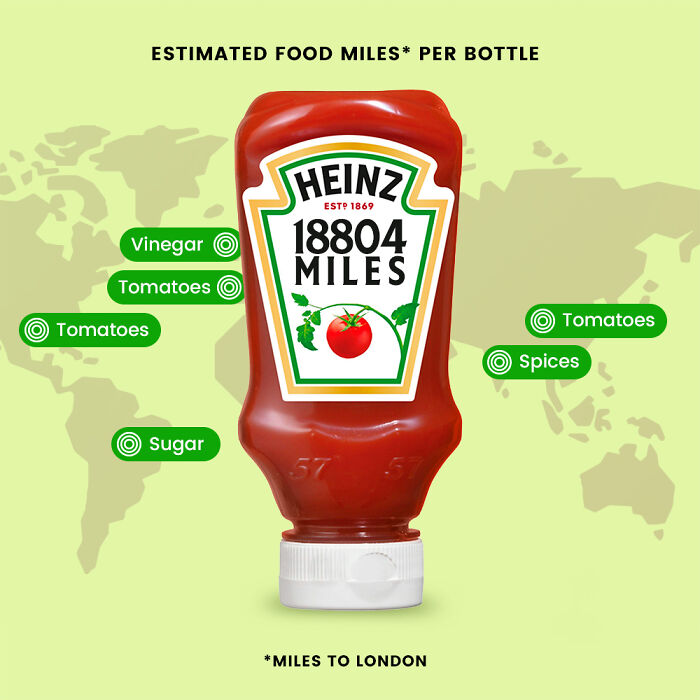












































114
35